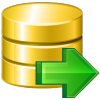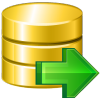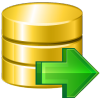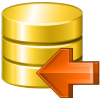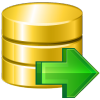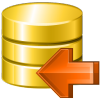Online Documentation for DB Extract for SQL Server
Step 6 - Setting up extraction options
At this step you can set the advanced extraction parameters and define query options for data extraction.
Metadata options
![]() Generate "CREATE DATABASE" statements
Generate "CREATE DATABASE" statements
Check this option to add the CREATE DATABASE statement(s) to the extraction script.
![]() Generate "USE DATABASE" statement
Generate "USE DATABASE" statement
Check this option to add the USE DATABASE statement(s) to the result script.
![]() Generate "DROP" statements
Generate "DROP" statements
Check the option to add the DROP statements for the extracted objects.
![]() With "IF" statements
With "IF" statements
Check this option to add the IF keyword to the DROP statements in the result script.
![]() Create empty procedures
Create empty procedures
This option specifies whether procedures with empty bodies are included in the result script or not.
![]() Extract privileges
Extract privileges
Tick off the option if you want the privileges (permissions on the objects) to be extracted.
![]() Order by dependencies
Order by dependencies
This option specifies whether objects should be ordered by their dependencies in the result script or not.
![]() Extract dependent objects
Extract dependent objects
This option determines the usage of dependencies between objects in the extraction process.
![]() Extract dependent tables data
Extract dependent tables data
Enable this option to extract the data of the dependent tables to the result script.
![]() Use collations
Use collations
This option determines the usage of collations in the extraction process.

Data options
Records in block / ![]() Insert "COMMIT" after each block
Insert "COMMIT" after each block
These controls allow you to define whether the COMMIT statement is inserted into the script or not, and to define the number of records in each block to be supplemented with this statement.
![]() Delete existing records before insert
Delete existing records before insert
Generates the TRUNCATE TABLE statements before the INSERT INTO statements.
![]() Generate "PRINT <object name>" statement
Generate "PRINT <object name>" statement
Check this option to allow adding the PRINT statement to the result script.
Data query options
This grid allows you to specify additional options for the SELECT statements used for data extraction.
Database name
This column represents the list of the databases containing the tables selected for data extraction.
Limit data
By setting non-zero values in this column you can limit the number of records extracted from each table.
Table name
This column contains the names of the tables (with the names of the schemas they belong to).
Table data filter
Here you can specify the WHERE clauses for data extraction from each of the tables.
Note that you can define data query options not only for a single table, but also for multiple tables at a time by using corresponding items of the context menu of the Data query options grid.

When you are done, press the Next button to proceed to the next step of the wizard.










